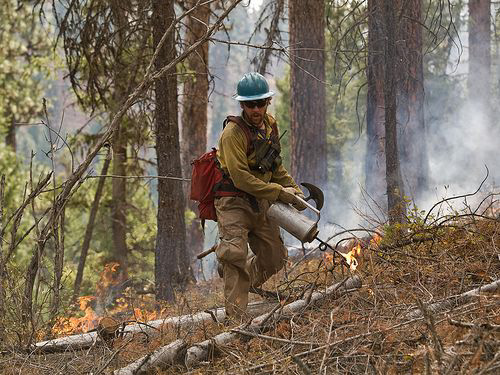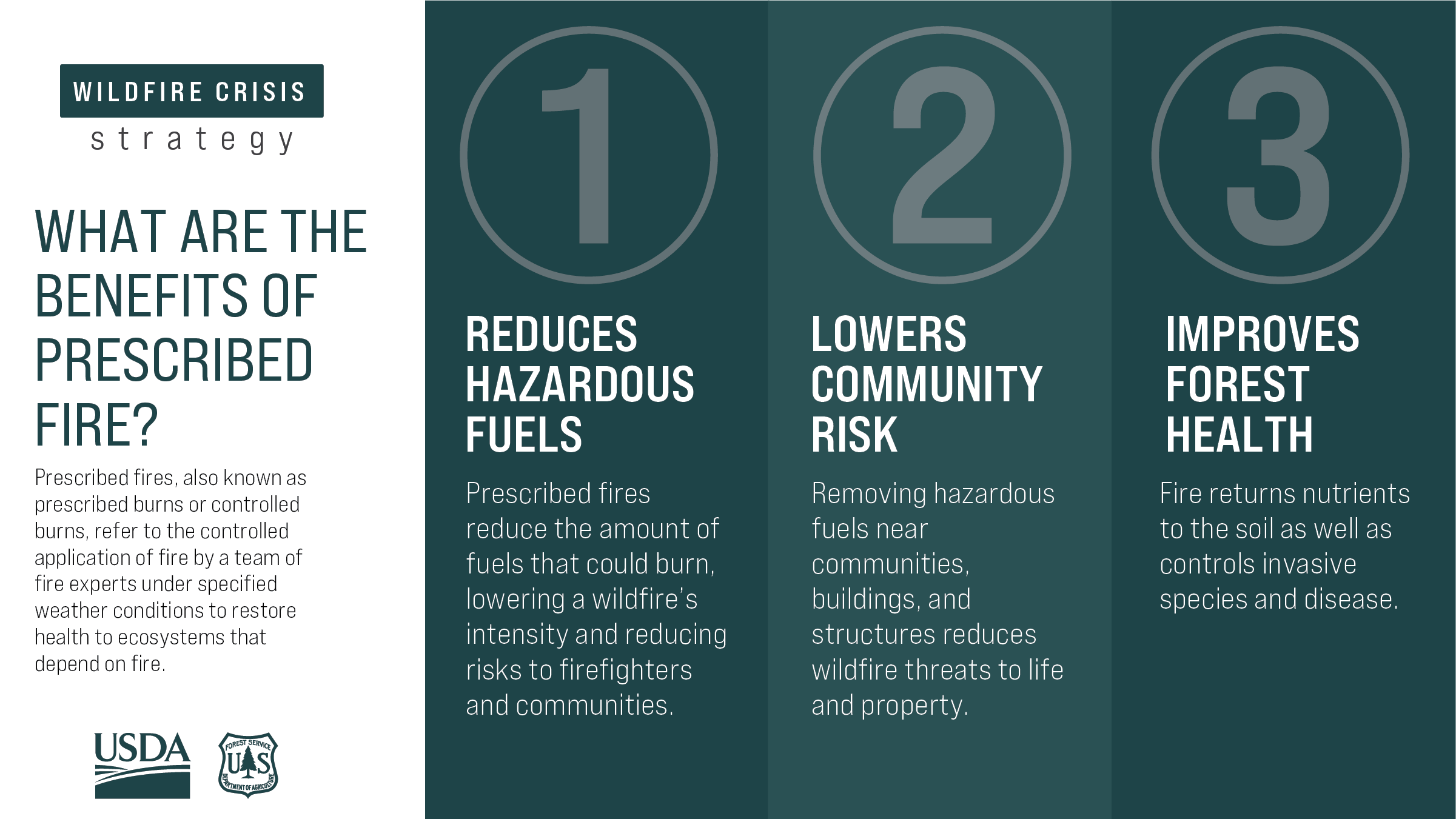Prescribed Fire on the Southwest Idaho Landscape

-
Air Quality
Managing and minimizing smoke impacts from prescribed burns is a key concern of public land managers. Natural resource agencies work with the National Weather Service to get real time conditions before igniting prescribed fires, and those conditions are monitored closely to maximize smoke dispersion. Factors evaluated include wind direction and speed, atmospheric stability, and long-range weather forecasts. Often, although the air is smoky, it still meets federal and state air quality standards.
Daily planned ignitions can be found online at: AirshedManagementSystem Idaho’s Department of Environmental Quality’s real-time air monitoring program collects measurements of ambient levels of air contaminants at more than 20 sites throughout the state. Integrated sampling methods are used at another 10 sites.
Real-time air monitoring data is located at Idaho.gov and Fire and Smoke Map (airnow.gov)
Fuels Treatments within the Southwest Idaho Landscape

Land managers plan for prescribed fire well ahead of time, visits the story map for details.
Prescribed fire is a planned fire used to meet management objectives
Did you know fire can be good for people and the land? After many years of fire exclusion, an ecosystem that needs periodic fire becomes unhealthy. Trees are stressed by overcrowding; fire-dependent species such as Ponderosa pine disappear; and flammable fuels build up and become hazardous. The right fire at the right place at the right time:
- Reduces hazardous fuels, protecting human communities from extreme fires.
- Minimizes the spread of pest insects and disease.
- Removes unwanted species that threaten species native to an ecosystem;
- Provides forage for game.
- Improves habitat for threatened and endangered species.
- Recycles nutrients back to the soil; and
- Promotes the growth of trees, wildflowers, and other plants.
Woodhead Fire success with prescribed fire on USDA Forest Service
More prescribed fires mean fewer extreme wildfires
Specialists write burn plans for prescribed fires. Burn plans identify – or prescribe – the best conditions under which trees and other plants will burn to get the best results safely. Burn plans consider temperature, humidity, wind, moisture of the vegetation, and conditions for the dispersal of smoke. Prescribed fire specialists compare conditions on the ground to those outlined in burn plans before deciding whether to burn on a given day.
Prescribed burns, also known as Rx burns, are controlled applications of fire to fuels confined within a predetermined area, under predefined environmental conditions, whereby fire behavior is managed to meet resource management objectives. This promotes landscape resiliency by reducing heavy fuel loads and minimizes the potential for severe wildfires in the future. It also creates a safer environment for wildland firefighters responding to future fires in the area and helps maximize their ability to safely and efficiently suppress wildfires. There are many different types of prescribed burns including:

Watch the videos below to see how prescribed fire is used across the landscape.
-
Prescribed Fire Benefits Idaho Wildlife
Prescribed fire is a critical component of active forest management. Partners of the Payette National Forest discuss how prescribed fire benefits wildlife in Idaho.
-
Prescribed Fire Holding Operations
The job of "holding" resources is to keep prescribed fires within the predetermined boundaries.
-
Drones Support Prescribed Burns
Fire teams use drones to help safely ignite prescribed burn operations and monitor prescribed fires on the Payette National Forest.
-
Go, No-go Checklist
Fire crews work through a checklist to determine whether the weather conditions fit in the windows they set for being able to safely start work on a prescribed fire.
-
Managing Smoke
Fire crews consider air quality concerns when they plan prescribed burns, learn what factors in to that decision.
-
Prescribed Fire and Fuels
Fire management specialists describe prescribed fire’s role in helping maintain the landscape.

